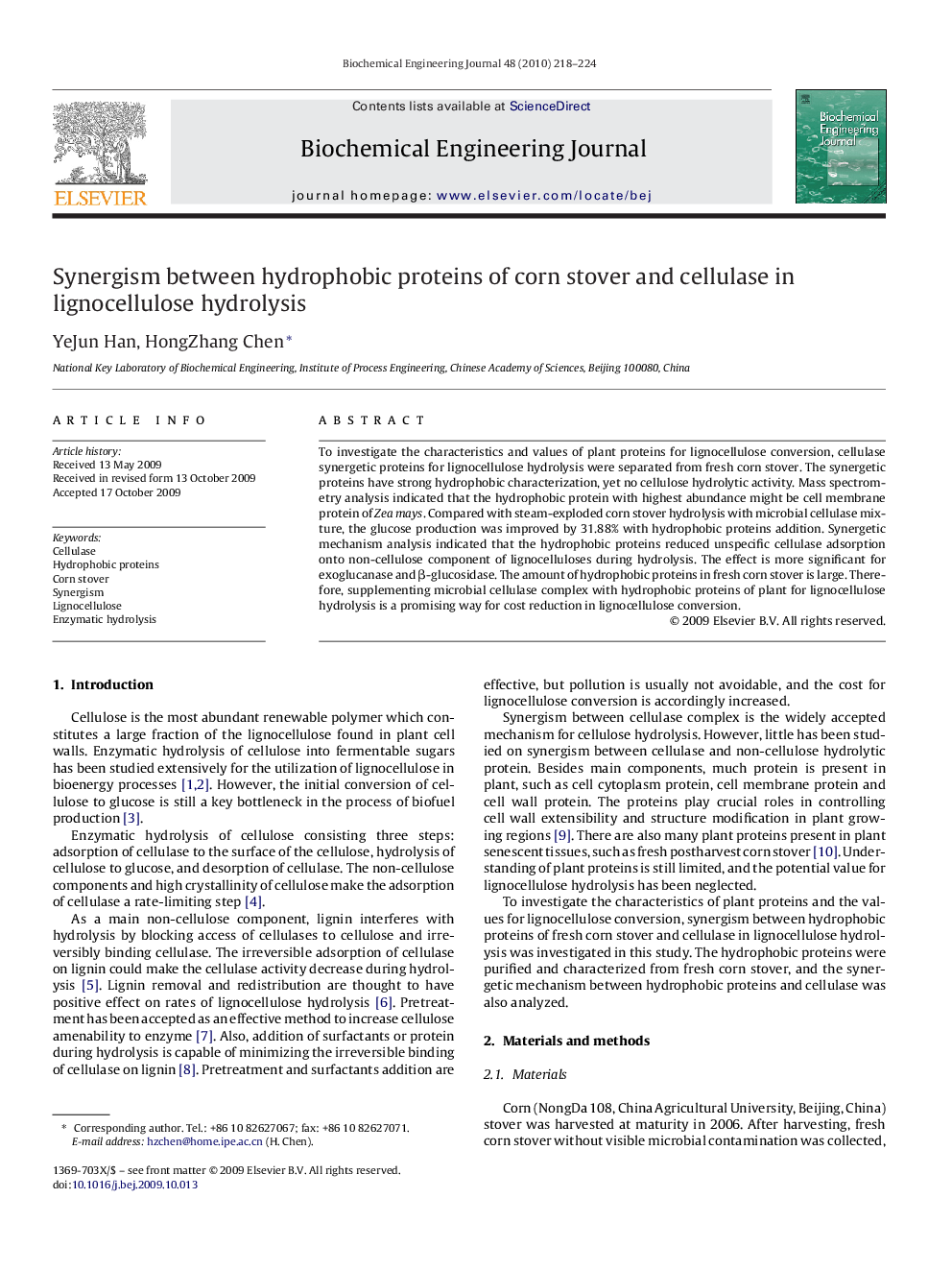| Article ID | Journal | Published Year | Pages | File Type |
|---|---|---|---|---|
| 4037 | Biochemical Engineering Journal | 2010 | 7 Pages |
To investigate the characteristics and values of plant proteins for lignocellulose conversion, cellulase synergetic proteins for lignocellulose hydrolysis were separated from fresh corn stover. The synergetic proteins have strong hydrophobic characterization, yet no cellulose hydrolytic activity. Mass spectrometry analysis indicated that the hydrophobic protein with highest abundance might be cell membrane protein of Zea mays. Compared with steam-exploded corn stover hydrolysis with microbial cellulase mixture, the glucose production was improved by 31.88% with hydrophobic proteins addition. Synergetic mechanism analysis indicated that the hydrophobic proteins reduced unspecific cellulase adsorption onto non-cellulose component of lignocelluloses during hydrolysis. The effect is more significant for exoglucanase and β-glucosidase. The amount of hydrophobic proteins in fresh corn stover is large. Therefore, supplementing microbial cellulase complex with hydrophobic proteins of plant for lignocellulose hydrolysis is a promising way for cost reduction in lignocellulose conversion.
